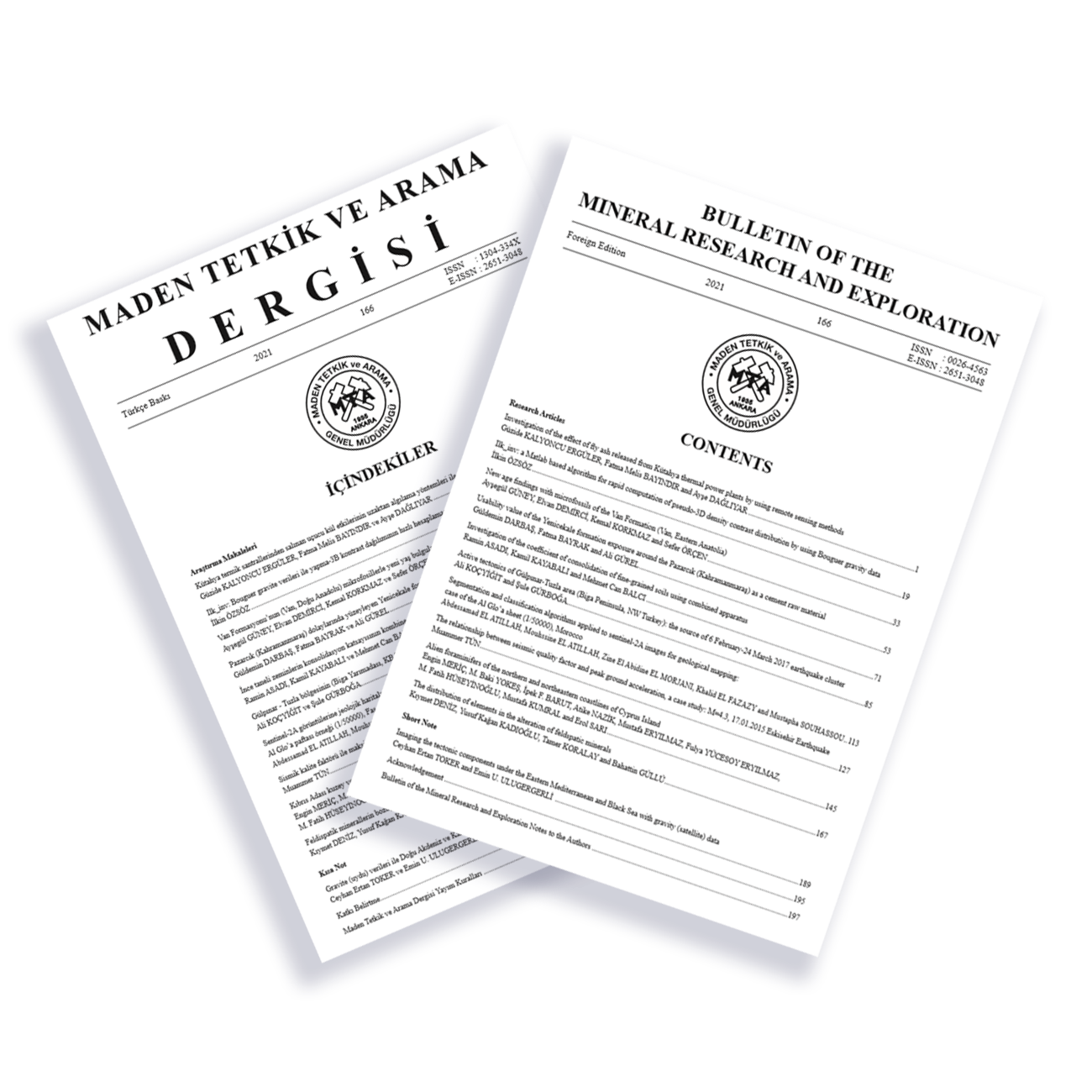Hydrogeological and water quality evaluation of parts of River Mamu Sub-Basin, southeastern Nigeria
Mamu Alt Havzası bölümlerinin hidrojeolojik ve su kalitesi değerlendirmesi, Güneydoğu Nijerya
Indexed In
Volume 167 / 2022
Authors
Emmanuel Kenechukwu ANAKWUBA, Chinenye Margaret OKOLO, Valeria Chibuzo AHANEKU, Stella Nwaife CHIBUZOR, Augustine Ifeanyi CHINWUKO
Keywords
Water Sources, Water Quality, Pollution, Trace Element, Fecal Coliform and Ebenebe Sandstone.
Abstract
The water sources in parts of the River Mamu sub-Basin, southeastern Nigeria were evaluated for domestic and agricultural purposes using hydrogeology and water quality. Thirty water samples from both surface water and groundwater were analysed for hydrochemical and biological parameters. The average depth to aquifers and their thicknesses are 109.9m and 11.8m respectively. The concentration of the major ions, TDS and EC are within the DSÖ permissible guidelines for drinking water. Heavy metals concentration ranges in mg/L for Cd2+ (0 - 0.06), Cr3+ (0 - 0.19), Hg2+(0 -1.0), As3+ (0 - 0.14) and total Fe (0 - 2.4) which in some of the samples exceed the permissible guideline values. The fecal coliform range in 100ml/L of samples (0 - 36) exceeds the guideline values in some of the samples. The water is Ca-Mg-Cl-SO4 type with the dominant ions as Ca2+ and SO4 2- for both groundwater and surface water. The dominant geochemical processes are rock-water interaction in the groundwater, which is a major contributor of dissolved ions and precipitation in the surface water. The WQI (17.84 - 301.99) connotes some samples as very poor quality for domestic purposes. Irrigation indices depict most of the water as good to excellent for agriculture.
https://doi.org/10.19111/bulletinofmre.941090
Click for .pdf
Türkçe .pdf için tıklayınız

